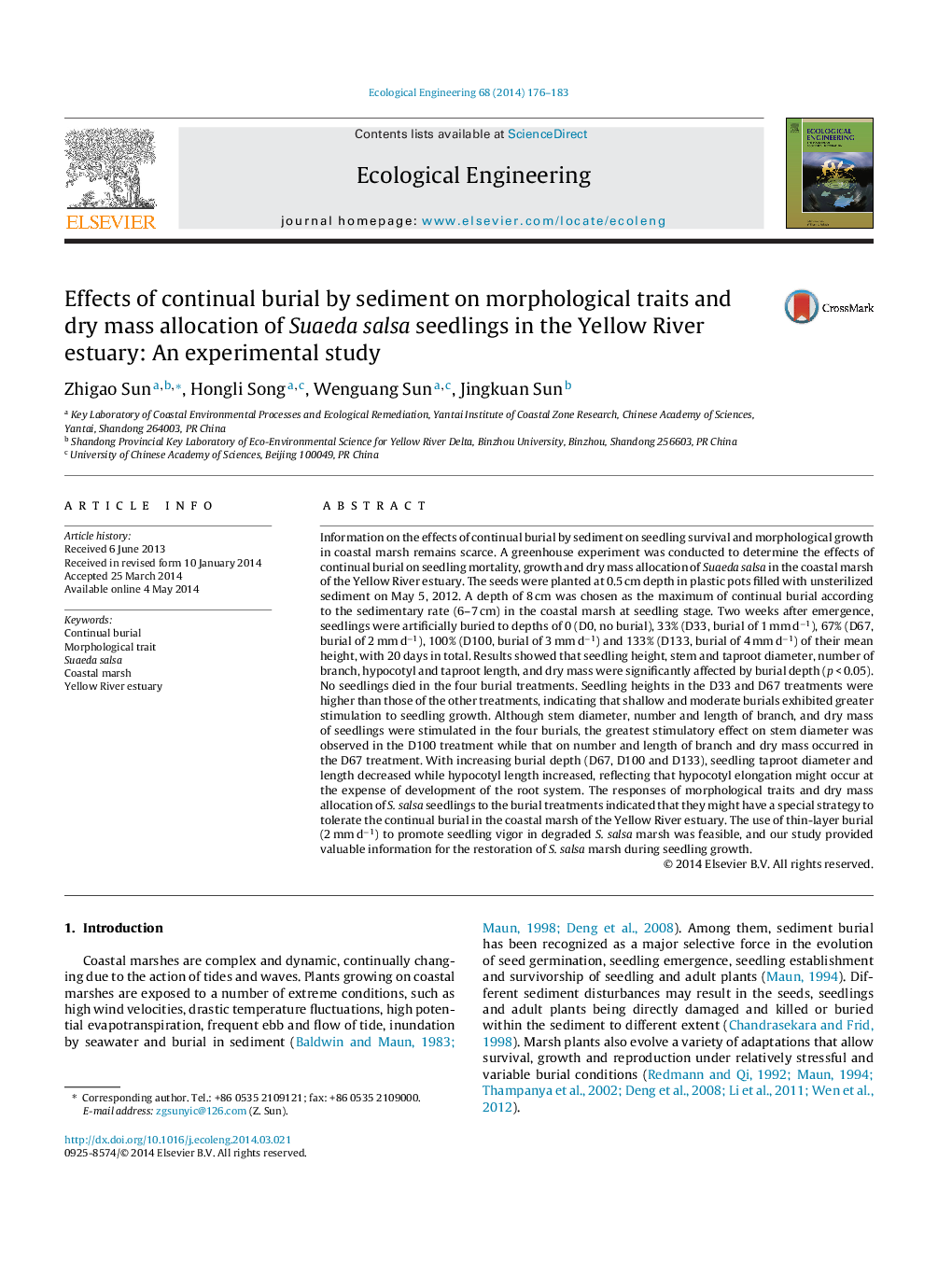| Article ID | Journal | Published Year | Pages | File Type |
|---|---|---|---|---|
| 6302309 | Ecological Engineering | 2014 | 8 Pages |
Abstract
Information on the effects of continual burial by sediment on seedling survival and morphological growth in coastal marsh remains scarce. A greenhouse experiment was conducted to determine the effects of continual burial on seedling mortality, growth and dry mass allocation of Suaeda salsa in the coastal marsh of the Yellow River estuary. The seeds were planted at 0.5 cm depth in plastic pots filled with unsterilized sediment on May 5, 2012. A depth of 8 cm was chosen as the maximum of continual burial according to the sedimentary rate (6-7 cm) in the coastal marsh at seedling stage. Two weeks after emergence, seedlings were artificially buried to depths of 0 (D0, no burial), 33% (D33, burial of 1 mm dâ1), 67% (D67, burial of 2 mm dâ1), 100% (D100, burial of 3 mm dâ1) and 133% (D133, burial of 4 mm dâ1) of their mean height, with 20 days in total. Results showed that seedling height, stem and taproot diameter, number of branch, hypocotyl and taproot length, and dry mass were significantly affected by burial depth (p < 0.05). No seedlings died in the four burial treatments. Seedling heights in the D33 and D67 treatments were higher than those of the other treatments, indicating that shallow and moderate burials exhibited greater stimulation to seedling growth. Although stem diameter, number and length of branch, and dry mass of seedlings were stimulated in the four burials, the greatest stimulatory effect on stem diameter was observed in the D100 treatment while that on number and length of branch and dry mass occurred in the D67 treatment. With increasing burial depth (D67, D100 and D133), seedling taproot diameter and length decreased while hypocotyl length increased, reflecting that hypocotyl elongation might occur at the expense of development of the root system. The responses of morphological traits and dry mass allocation of S. salsa seedlings to the burial treatments indicated that they might have a special strategy to tolerate the continual burial in the coastal marsh of the Yellow River estuary. The use of thin-layer burial (2 mm dâ1) to promote seedling vigor in degraded S. salsa marsh was feasible, and our study provided valuable information for the restoration of S. salsa marsh during seedling growth.
Related Topics
Life Sciences
Agricultural and Biological Sciences
Ecology, Evolution, Behavior and Systematics
Authors
Zhigao Sun, Hongli Song, Wenguang Sun, Jingkuan Sun,
